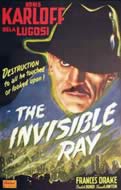| << To Blog Home >> | |
|
|
November 6, 2007 -- 9:48 EST The Super X-Ray So it was with amazement that, when I logged onto the news yesterday, I saw headlines everywhere proclaiming a medical breakthrough: the "Super X-Ray". We had just posted an article about the results of the CorE 64 study, presented at the annual American Heart Association Scientific Sessions in Orlando by the investigators at Johns Hopkins. The goal was to compare the diagnostic accuracy of 64-slice CT angiography with the current "gold standard" of invasive cardiac catheterization in the detection of coronary artery disease. The results were excellent -- you can read more about the study in our article, "64-Slice CT Heart Scan Gets High Marks As Test for Blocked Arteries." It quickly became clear that all the articles about the "Super X-Ray" were in fact about the CorE 64 study. In fact, most of the articles were feeds from the AP article by Marilynn Marchione. I've discussed with cardiologists from the Society of Cardiovascular Computed Tomography the fact that this technology, which has been around for a few years now, needed a name. Sometimes it's called Multislice CT (CT stands for "computed tomography") or Multidetector CT or Cardiac CT or CT Angiography, CTA and so on. And there are generations from 16-slice to the current 64-slice and coming soon at your neighborhood imaging center, the 256-slice scanner. But now the retail press has taken care of that: presenting the "Super X-Ray". I'll take two, please. By the way, I'll be writing more on this subject -- because there are some serious inaccuracies in the AP article, for example, stating that Multislice CT scans "deliver 10 times more radiation to the patient than a standard angiogram". (Who wouldn't glow after one of those?) There are a number of studies that show the range of radiation doses to be anywhere from the same to about twice as much, depending on who does the study, what equipment is used and whether newer techniques such as gating and phasing are used (significantly reducing the radiation dose). Even at its high end, the radiation exposure from CTA is similar or less than what the patient gets in a typical nuclear stress test -- a widely-used test that many imaging specialists feel will be replaced by CTA. For more, and more accurate information and interviews with experts about this and other imaging technologies, visit Angioplasty.Org's Imaging Center. |
|


 On Halloween night, Turner Classic Movies ran
a Karloff-a-thon and I got to see a favorite sci-fi flick from my nerdy
8th grade years: "
On Halloween night, Turner Classic Movies ran
a Karloff-a-thon and I got to see a favorite sci-fi flick from my nerdy
8th grade years: "